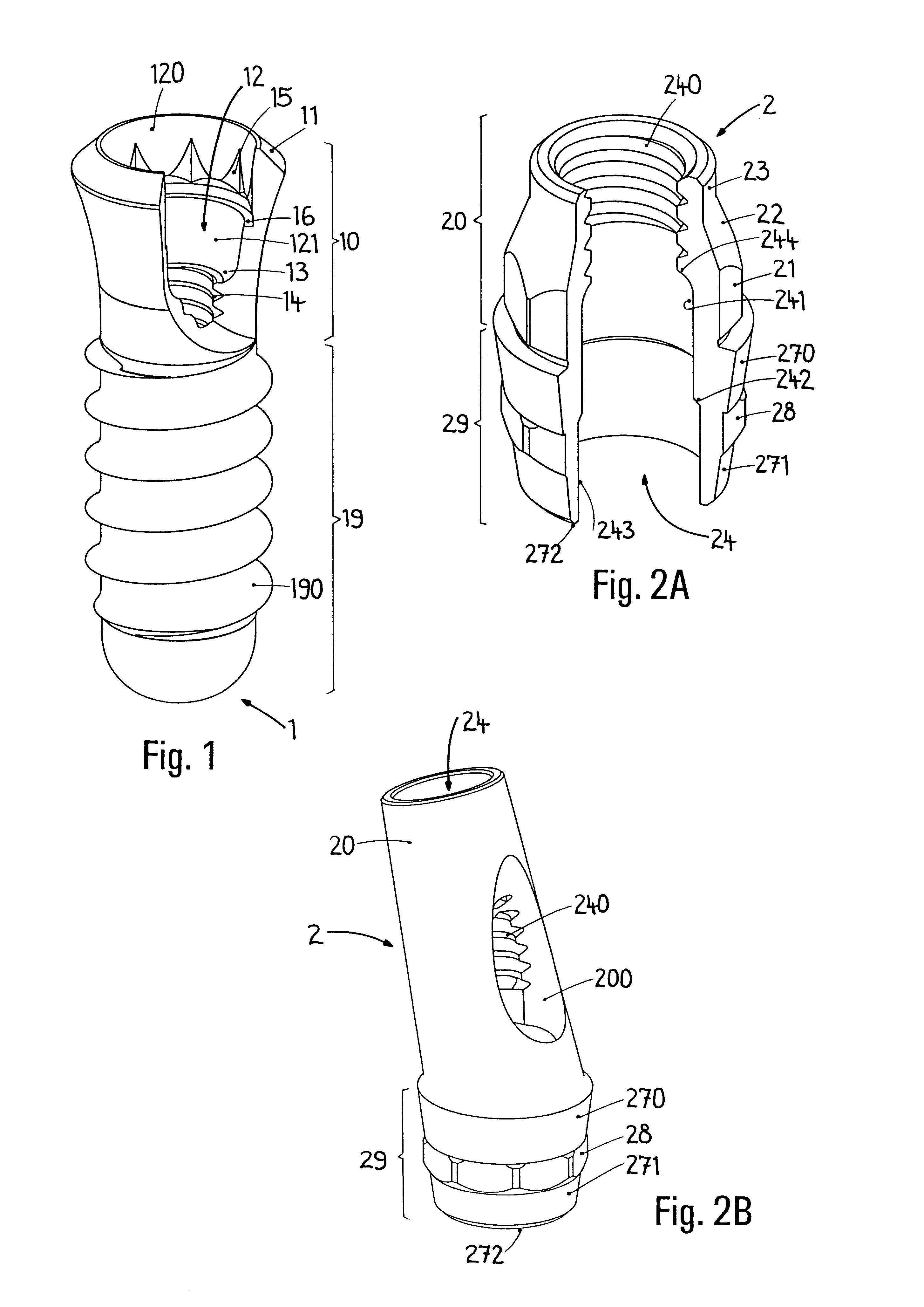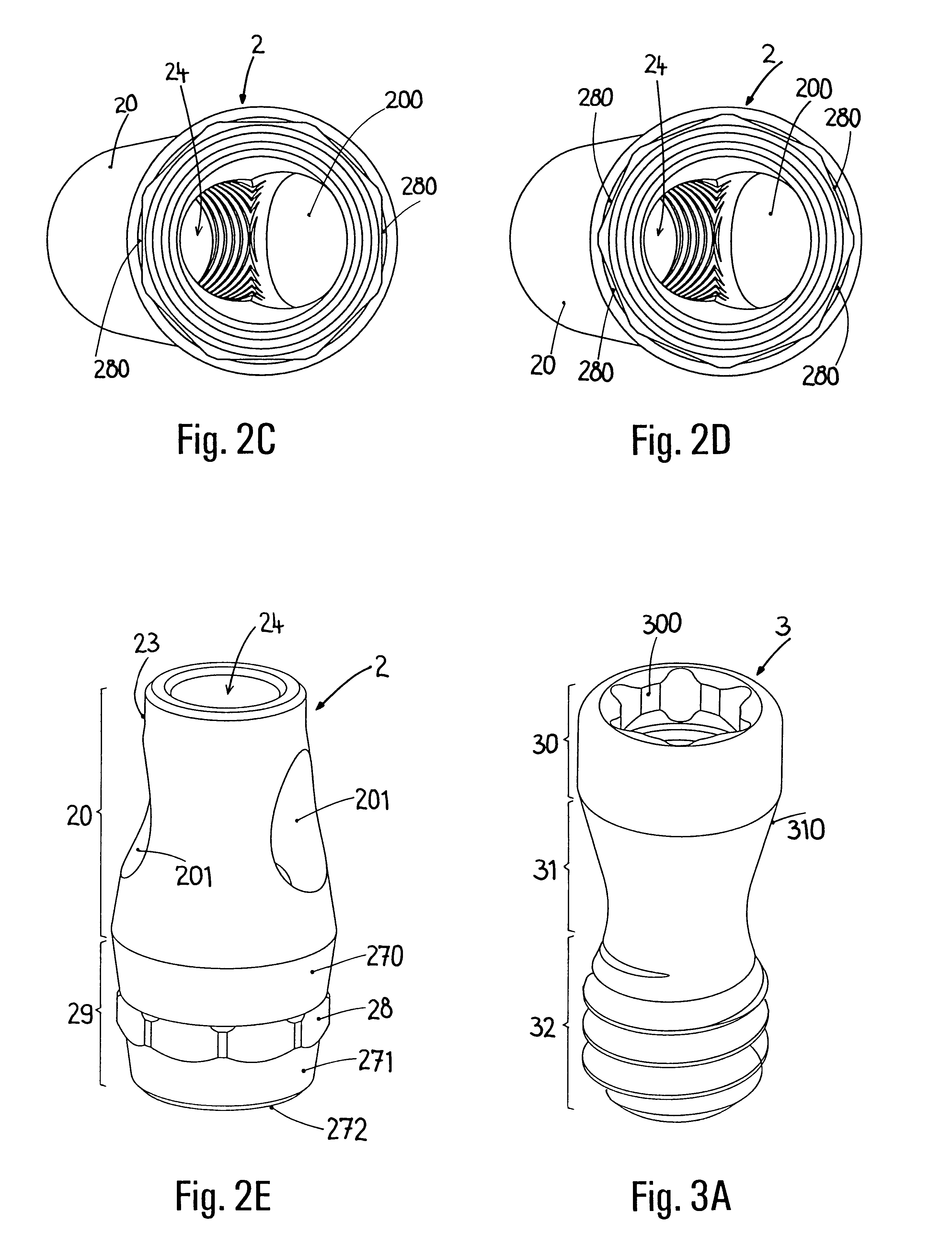Connection between a dental implant and an abutment
a technology of connecting abutments and dental implants, applied in dental implants, dental surgery, medical science, etc., can solve the problems of limiting the size of insertable occlusal screws, and cannot, however, be considered the ultimate, complete solution, and achieve the effect of high functional reliability and efficient production costs
- Summary
- Abstract
- Description
- Claims
- Application Information
AI Technical Summary
Benefits of technology
Problems solved by technology
Method used
Image
Examples
first embodiment
This straight abutment 2 of a first embodiment has at the top the neck part 20 and the downwardly adjoining root part 29, which is conical in certain portions. Said root part is intended for insertion into the receiving hole 12 of the implant 1, while the neck part 20 protrudes above the implant shoulder 11. The neck part 20 is divided into three segments, to be specific the polygonal segment 21 directly adjoining the root part 29--here an external octagon--, the cylindrical guiding segment 23 at the very top and the cone segment 22 lying between the polygonal segment 21 and the guiding segment 23. The polygonal segment 21 is useful for reproducible positioning when taking impressions and making models and also for possible rotational securement of the fitted-on superstructure. The guiding segment 23 contributes to the centering and guiding of the fitted-on crown cap.
On the root part 29 there is a mating contour complementing the receiving contour 15 in the implant 1, consequently h...
third embodiment
The abutment 2 of the third embodiment has a conical neck part 20, which adjoins the unchanged root part 29 in a straight manner and advantageously terminates at the very top with a cylindrical guiding segment 23. On the neck part 20 there are two lateral openings 201 for transversal screw connection with a fitted-on crown cap. The lateral openings 201 are preferably offset from alignment with respect to one another by 22.5.degree.. Consequently, 16 rotational positions of a transversal cap 7 fitted onto the implant 1 and the abutment 2 are available (see FIG. 6C). This makes better adaptation to the anatomical conditions encountered possible, which is relevant in particular when replacing an individual tooth.
FIG. 3A
For the construction of the connection arrangement according to the invention on the implant 1, alternatively one of the embodiments described above of the abutment 2--the neck part 20 could have further modifications--and a base screw 3 are required. Considered in the d...
PUM
 Login to View More
Login to View More Abstract
Description
Claims
Application Information
 Login to View More
Login to View More - R&D
- Intellectual Property
- Life Sciences
- Materials
- Tech Scout
- Unparalleled Data Quality
- Higher Quality Content
- 60% Fewer Hallucinations
Browse by: Latest US Patents, China's latest patents, Technical Efficacy Thesaurus, Application Domain, Technology Topic, Popular Technical Reports.
© 2025 PatSnap. All rights reserved.Legal|Privacy policy|Modern Slavery Act Transparency Statement|Sitemap|About US| Contact US: help@patsnap.com



